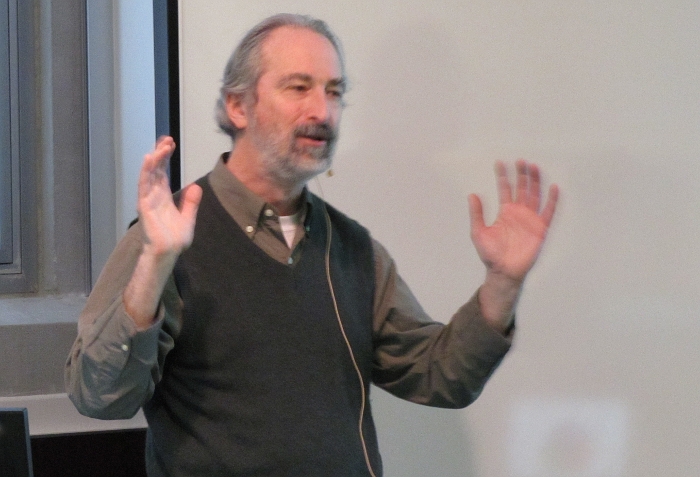NIMBioS Seminar Series
In conjunction with the interdisciplinary activities of the National Institute for Mathematical and Biological Synthesis (NIMBioS), a seminar series on topics in mathematical biology will be hosted at NIMBioS every other Tuesday at 3:30 p.m. (unless otherwise noted) in the Hallam Auditorium, Room 206, Claxton Building, 1122 Volunteer Blvd. Seminar speakers will focus on their research initiatives at the interface of mathematics and many areas of the life sciences. Light refreshments will be served in Room 205 beginning 30 minutes before each talk. Faculty and students from across the UT community are welcome to join us.
Time/Date: Tuesday, February 10, 2015, 3:30 p.m.*
Location:
Room 206, Claxton Building, 1122 Volunteer Blvd.
Speaker:
Dr. Michael Lynch, Biology, Indiana Univ., Bloomington
NIMBioS Postdoctoral Fellows Invited Distinguished Visitor
Topic:
Mutation, Drift and the Origin of Subcellular Features
Abstract:
Understanding the mechanisms of evolution and the degree to which phylogenetic generalities exist requires information on the rate at which mutations arise and their effects at the molecular and phenotypic levels. Although procuring such data has been technically challenging, high-throughput genomic sequencing is rapidly expanding our knowledge in this area. Most notably, information on spontaneous mutations, now available in a wide variety of organisms, implies an inverse scaling of the mutation rate (per nucleotide site) with the effective population size of a lineage. The argument will be made that this pattern naturally arises as natural selection pushes the mutation rate down to a lower limit set by the power of random genetic drift rather than by intrinsic molecular limitations on repair mechanisms. This drift-barrier hypothesis has general implications for all aspects of evolution, including the performance of enzymes and the stability of proteins. The fundamental assumption is that as molecular adaptations become more and more refined, the room for subsequent improvement becomes diminishingly small. If this hypothesis is correct, the population-genetic environment imposes a fundamental constraint on the level of perfection that can be achieved by any molecular adaptation, and indeed all adaptations. Additional examples consistent with this hypothesis will be drawn from recent observations on the transcription error rate and on the evolution of the oligomeric states of proteins.
*Join us for refreshments at 3 p.m. in Room 205.
Seminar Flyer (pdf)
NIMBioS seminars are available for viewing via live streaming during the talk and are archived for later viewing on NIMBioS' YouTube channel.
For more information about this and other NIMBioS Seminars, visit /seminars.

NIMBioS
1122 Volunteer Blvd., Suite 106
University of Tennessee
Knoxville,
TN 37996-3410
PH: (865) 974-9334
FAX: (865) 974-9461
Contact NIMBioS



